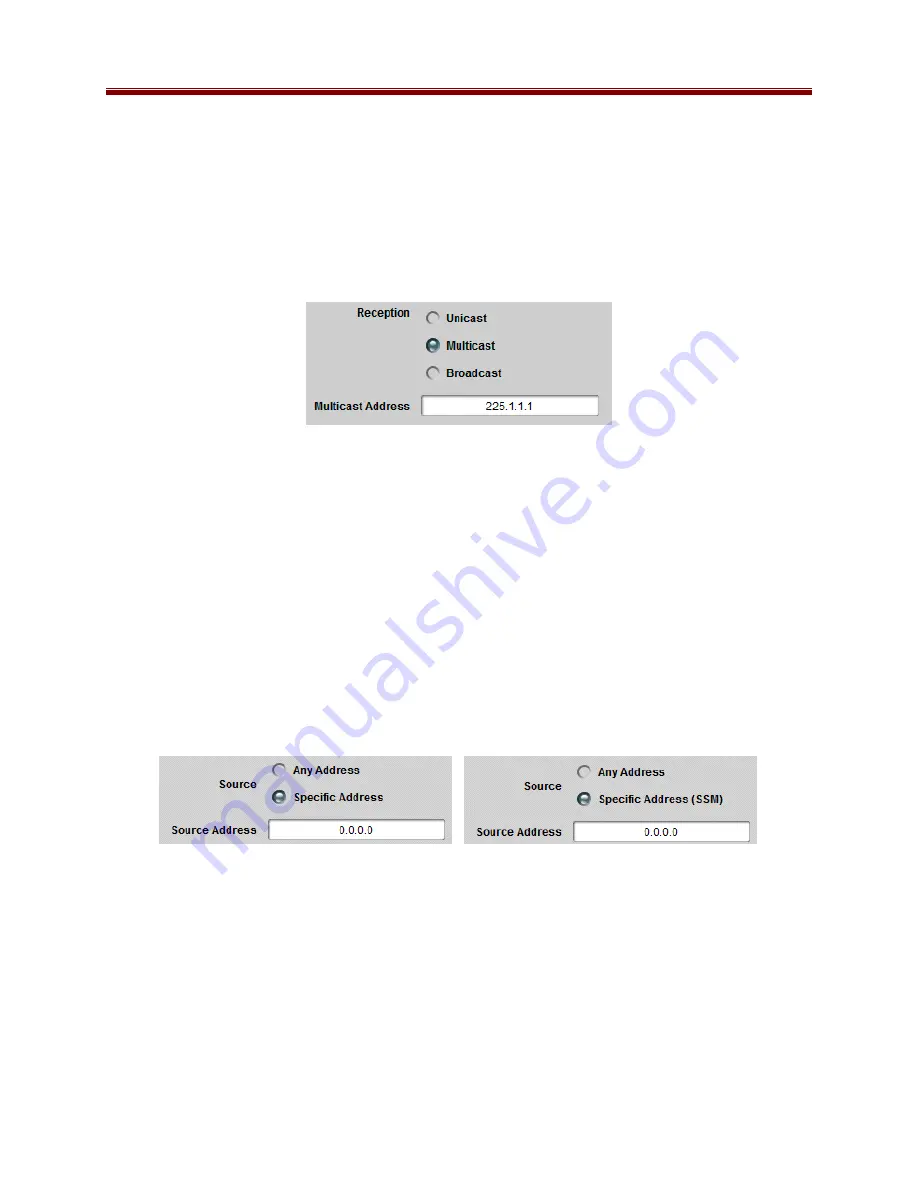
36
administrative uses. It is recommended to use UDP ports 1024 and higher. The BBG-
1090-TRX-MPEG, however, will accept any legal value.
•
Reception: selects the address to receive from. The options are:
o
Unicast: the packets are being sent to the IP address of this Ethernet port. The
address of the Ethernet port can be set or reviewed in the Network Tab.
o
Multicast: the packets are being sent to a Class-D multicast address (between
224.0.0.0 and 239.255.255.255). If this option is selected, a new field is
displayed to accept the multicast address:
The BBG-1090-TRX-MPEG will warn the user if the address entered in this field
is not a multicast address. The device includes a full implementation of IGMP
V1/V2/V3 to convey group membership information to upstream routers; IGMP
is configured in the Network Tab.
o
Broadcast: the packets are being sent to a broadcast address (either the all-hosts
broadcast address of 255.255.255.255 or a subnet broadcast address). Note that
this is extremely rare in practice.
•
Source: If desired, the BBG-1090-TRX-MPEG can filter packets by source IP address.
This is useful when the network includes a primary and a backup stream, sent to the same
address, but from different sources. The options are:
o
Any Address: this input will accept packets from any address.
o
Specific Address: this input will only accept packets from a given specific
address. When this option is selected, a new field appears where the desired
source IP address can be entered:
Unicast/Broadcast
Multicast
Unicast/Broadcast
Multicast
The Source Address must be a valid unicast address. In case of Multicast
reception, the BBG-1090-TRX-MPEG will go into SSM (Source-Specific
Multicast) mode. If IGMP V3 is in use, the card will use it to inform the network
of the choice selection. Note that the BBG-1090-TRX-MPEG does not require an
IGMP V3 network to operate in SSM mode, as it can filter packets in real-time at
line rate.
Содержание BBG-1090-TRX-MPEG
Страница 18: ...18...
















































